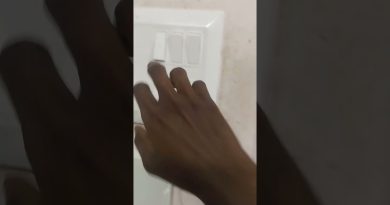How to Run SFC /SCANNOW OFFLINE to Fix Problems on Windows 10 [2021]
On Windows 10, when you start noticing random errors, problems booting up, or features not working as expected, there’s a good chance that one or multiple system files might have gone missing or corrupted for unknown reasons. Usually, problems with system files could occur as a result of an issue installing a system update, driver, or application, or while making changes to the installation manually.
If you happen to come across this issue, you can use the Windows 10 System File Checker (SFC), which is a command-line tool designed to scan the integrity and restore missing or corrupted system files with working replacements.
However, there are situations wherein a corrupt or missing system file prevents Windows from booting normally or prevents Command Prompt and console programs like sfc.exe from being launched. In such cases, SFC can be run offline via the Windows Recovery Environment (Windows RE) in Windows.
How to repair Windows 10 with System File Checker offline:
1. Open Settings.
2. Click on Update & Security.
3. Click on Recovery.
4. Under the “Advanced startup” section, click the Restart now button.
5. Click on Troubleshoot.
6. Click on Advanced options.
7. Click on Command Prompt.
8. Select your account in the Advanced startup options.
9. Enter the password.
10. Click the Continue button.
11. Type the following command to start the diskpart tool and press Enter: diskpart
12. Type the following command to determine the location of the Windows and System Reserved partitions and press Enter: list volume
13. Confirm the current drive letter assignment for the System Reserved partition and Windows 10 partition, which is usually the volume with the largest size. For example, D and E.
14. Type the following command to run the System File Checker offline and press Enter: sfc /scannow /offbootdir=d: /offwindir=d:windows
15. In the command, we are using the /offboodir option to specify the drive letter of the System Reserved partition, which in this case is F. Also, the /offwindir option specifies the location of the Windows 10 files, which in this case is C:Windows.
16. Click the X button to close the Command Prompt.
17. Click on Continue.
Once you complete the steps, the command tool will fix any problems with system files on Windows 10, and the device will restart normally.
VIEWING SFC SCAN LOGS
To view the details stored in the CBS.Log file from an SFC scan, use these steps:
1. Open Start.
2. Search for Command Prompt, right-click the top result, and select the Run as administrator option.
3. Type the command (you’ll find it in a comment section below) and then click Enter.
4. Check the Windows 10 desktop for a “sfclogs.txt” file.
5. Double-click the sfclogs.txt file to open it with the default text editor app.
After you complete the steps, the log file will reveal all the details of the scanned system files and information for files that couldn’t be repaired. (This option is only available when performing a scan within Windows 10, not when performing an offline scan with Command Prompt.)
REPAIRING SYSTEM FILES MANUALLY (WITH EXAMPLE COMMANDS)
To repair damaged system files in Windows 10 manually, use these steps:
1. Open Start.
2. Search for Command Prompt, right-click the top result, and select the Run as administrator option.
3. Type the following command to take ownership of the corrupted files and press Enter: takeown /f C:PATHTOFILE
4. In the command, make sure to update the command with the path to the file that you’re trying to fix.
5. In this example, the command takes ownership of the “ActionCenter.dll” file: takeown /f C:WindowsSystem32ActionCenter.dll
6. Type the following command to grant full administrator access to the corrupted file and press Enter: icacls C:PATHTOFILE /Grant Administrators:F
7. In the command, make sure to update the command with the path to the file that you’re trying to fix.
In this example, the command grants access to the “ActionCenter.dll” file:
icacls C:WindowsSystem32ActionCenter.dll /Grant Administrators:F
8. Type the following command to replace the corrupted files with a good-known version and press Enter: copy C:PATHTOSOURCEGOODFILE C:PATHTODESTINATIONBROKENFILE
In the command, make sure to update the command with the source and destination paths to replace the corrupted file.
9. In this example, the command replaces the “ActionCenter.dll” file in the System32 folder: copy C:FilesActionCenter.dll C:WindowsSystem32ActionCenter.dll
10. Type the following command to verify the integrity of the system files and press Enter: sfc /verifyonly
➤ MORE INFORMATION & RESOURCES:
✓ https://www.windowscentral.com/how-use-sfc-scannow-command-fix-problems-windows-10
✓ https://www.winhelponline.com/blog/run-sfc-offline-windows-10-7-vista/
✓ https://www.dell.com/support/kbdoc/en-lt/000137221/how-to-run-sfc-scannow-from-the-windows-recovery-environment-winre
how to repair windows 7



